The Sussex Chicken is indigenous to the United Kingdom. They are considered to be dual-purpose chickens because they are good for both egg production and meat production. This breed of chicken is a medium-sized breed, with silky plumage that comes in eight different colorways.
The Sussex chicken is a popular breed known for both its docile temperament and its hardy constitution. Sussex chickens are easy to handle, so they are a great option for beginner farmers. Considering these birds are so friendly and so easy to take care of, they may even prove to be excellent pets. Chicken farmers love them for their beauty, personality, and utility.
Below, you will find all the information you need to help you decide whether or not you would like to raise Sussex Chickens.

Quick Facts about the Sussex Chicken
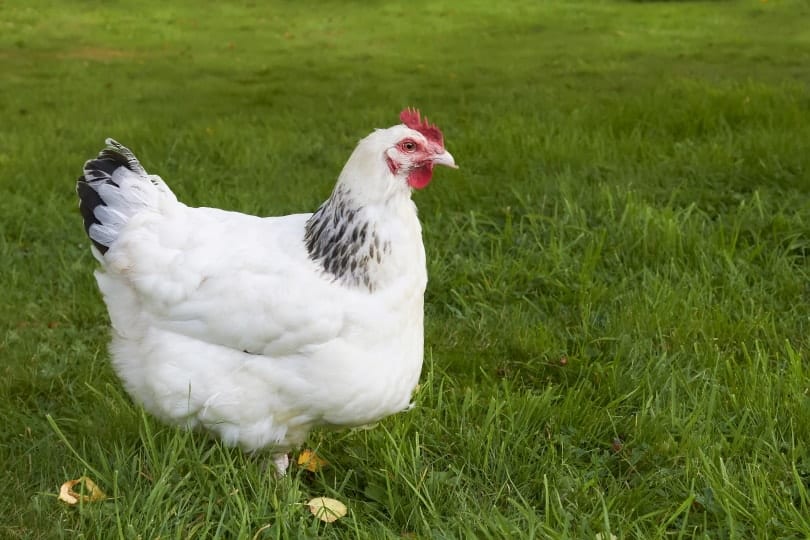
| Breed Name: | Sussex Chicken |
| Place of Origin: | The United Kingdom |
| Uses: | Dual-purpose, meat, and eggs |
| Cock (Male) Weight: | Up to 9 lbs |
| Hen (Female) Weight: | Up to 7 lbs |
| Colors: | Eight colorations: brown, buff, white, red, coronation, speckled, and silver |
| Lifespan: | Over 8 years |
| Climate Tolerance: | Adjusts to most temperatures, favors cooler climates, cold-hardy |
| Care Level: | Easy |
| Production: | Excellent |
| Comb type: | Single |
| Egg color: | Tinted brown |
| Diet: | Herbivore |
| Minimum coop size: | 2–3 square feet per chicken |
| Set-Up: | Free-range, caged |
| Compatibility: | High |
| Temperament: | Docile, friendly, makes a good pet |
Sussex Chicken Origins
The Sussex Chicken hails from the county of Sussex, in south-east England, and is one of the oldest chicken breeds in Britain. They are thought to have descended from Roman chickens brought to the area by the Romans. The breed is thought to have been further developed from crosses of the Old English Game breed and the Redcap.
In 1845, birds labeled as “Old Sussex or Kent Fowl” were shown at the first poultry fair in London. But Sussex Chickens didn’t make it into the first poultry standard in 1865. It wasn’t until 1902 that three colors of Sussex were entered into the breed standard together—light, red, and speckled. Up until the introduction of commercial hybrids around the Second World War, the Sussex was one of the main breeds of chicken bred for their meat in the United Kingdom. More recently, new varieties of the Sussex Chicken were developed. These have favored higher productivity and smaller size.
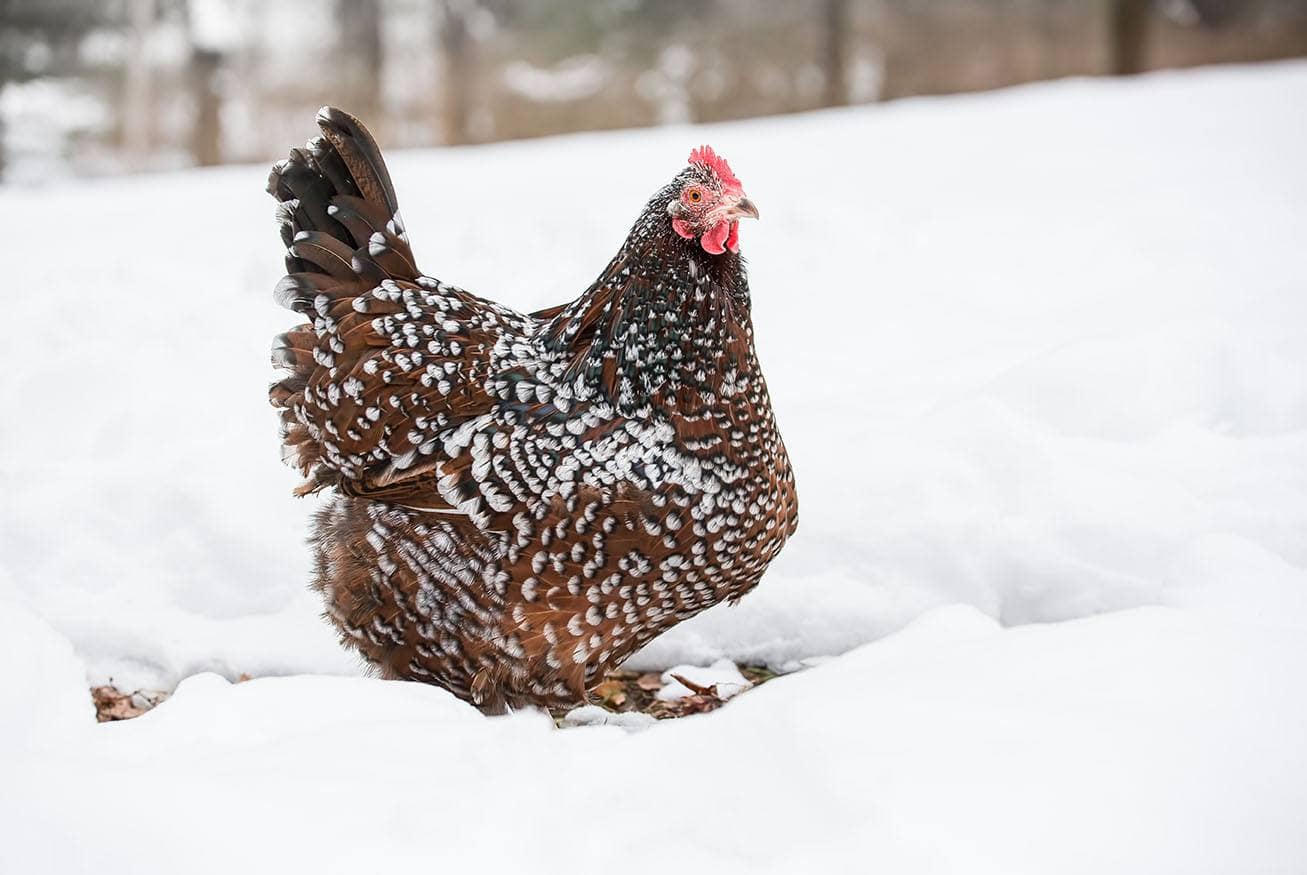
Sussex Chicken Characteristics
Uses
Sussex chickens are a dual-purpose breed that is used for both meat and eggs. They are a large breed, and their eggs are quite large as well. Their meat is considered to be flavorful, juicy, and to have a good texture with a good ratio of fat, making them a popular choice for farmers. As a breed that puts on fat very easily, they are well suited for retail poultry operations. If you feed Sussex chickens extra, they can gain weight very quickly. These qualities make Sussex chickens ideal for meat production.
The hens are a fair to good egg producer, though they will lay more eggs if not allowed to become overweight. They lay large eggs that are generally a deep orange, brown, or light brown color and have a smooth, glossy shell. The yolk is orange and the egg white is thick and firm. Sussex chicken eggs are considered by many to be some of the best eggs in the world, known for their high quality and delicious taste. In general, hens lay 180–200 tinted eggs a year; some strains can lay even more. Each egg weighs about 60 grams. Sussexes are also often bred for showing.
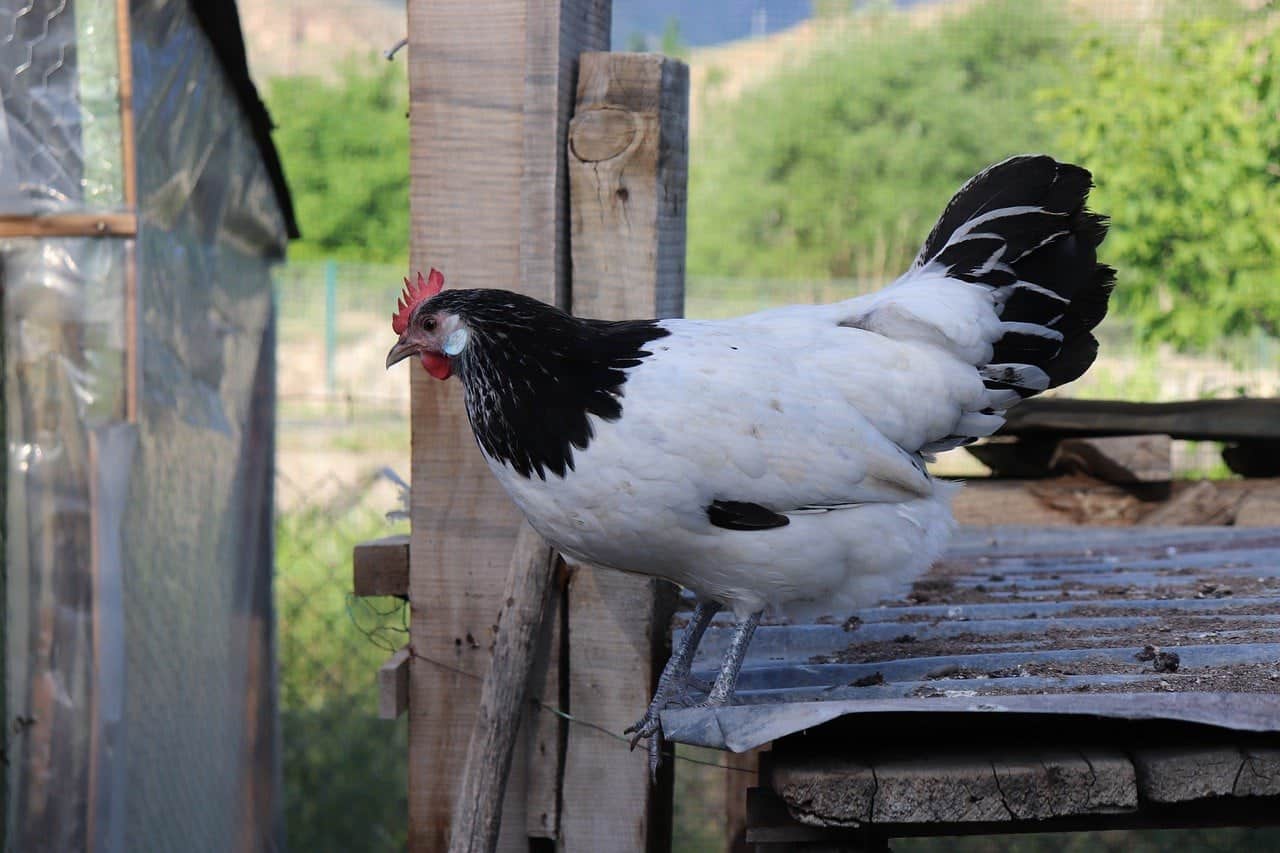
Appearance & Varieties
The Sussex chicken has a long, broad, flat back, long and straight breastbone, wide shoulders, and a rectangular shape. Its tail is held at a 45-degree angle from its body. The darker varieties have red eyes and the lighter varieties have orange eyes, and they all have a single comb. Every variety has red earlobes and white legs and skin. Hens weigh about 7 lbs and cocks about 9 lbs.
The American Poultry Association recognizes three colors: light, red, and speckled, while the Poultry Club of Great Britain recognizes eight colors, including brown, buff, coronation, silver, and white. Each coloration has a different pattern of pigment on their bodies, wings, and tails. Light Sussexes have a white body with a black tail, in-flight feathers, wing coverts, and stripes on the neck hackles. The Red variety has similar markings to the light, but they are a deep, intense red color all over. The speckled features a rich brown shade with a white tip on every feather.
The brown Sussex is slightly paler than the red, with a much duller coloring. The buff has the same markings as the red and brown, but their darker shade is greenish-black and their dominant color is buff. The silver variety and the light are very alike, with the silver having grey thighs and a dark breast with silver flecks.
The white is pure white all over. The original coronation died out around the Second World War but was recreated in the 1980s. They have the same markings as the light, but with lavender instead of black.
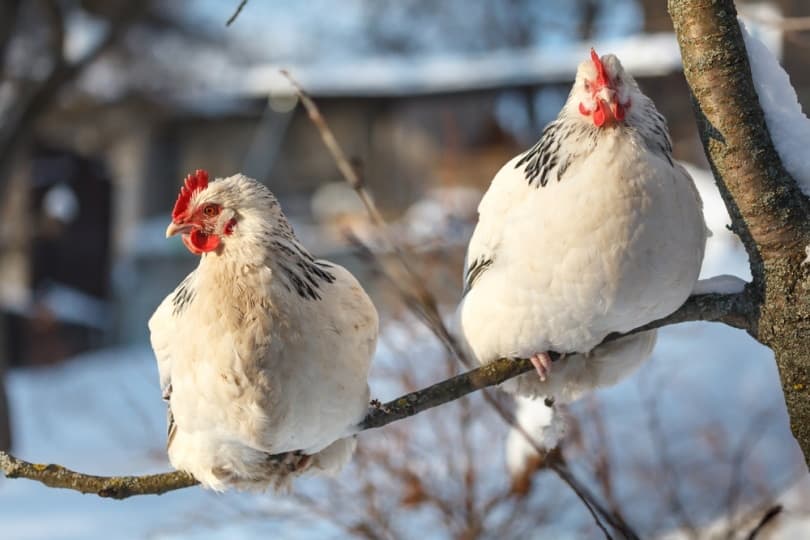
Population/Distribution/Habitat
Even though they offer both the benefit of being a great show chicken and of being useful for meat and eggs, Sussex Chickens are more favored in Canada, England, and other countries than in the United States. The Sussex chicken was once extremely common in the United Kingdom but is now displaced by modern industrial hybrid lines. These hybrids are bred for higher productivity and faster growth, which has led to the Sussex chicken becoming relatively rare and its genetic diversity has been put at greater risk.
This breed is rated as recovering by The Livestock Conservancy, which is America’s leading organization working to save over 150 heritage breeds from extinction.

Are Sussex Chickens Good for Small-Scale Farming?
Sussex chickens are a dual-purpose breed popular for both small-scale and commercial farming. They are known for their good production of eggs and meat and are also relatively hardy, disease-resistant, and easy to keep. They are a heritage breed that has been around for centuries known for their robustness, egg production, and meat quality. Sussex Chickens are well-adapted to a variety of climates and can thrive in both free-range and confinement systems. They are suited for both organic and non-organic production systems.
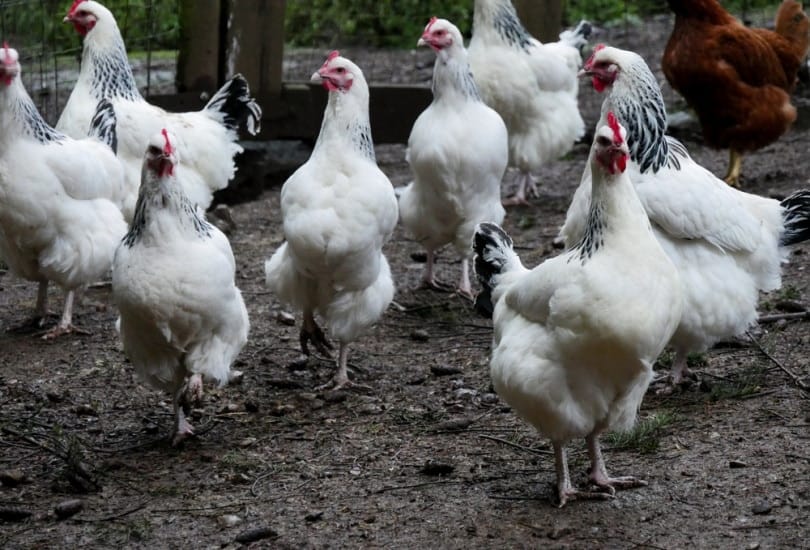
Featured Image Credit: GlassQuail, Shutterstock
